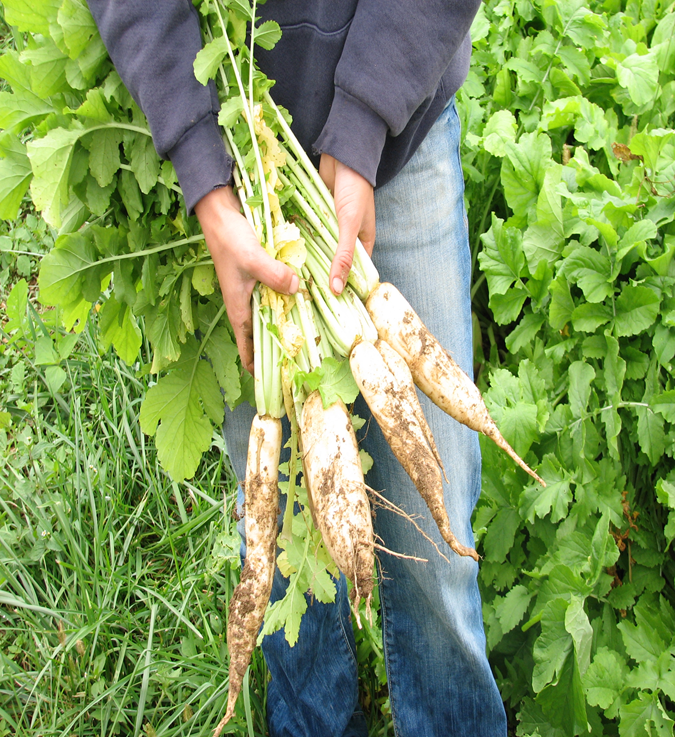Daikon radish is a brassica with a deep tap root that penetrates subsoil, improves tilth, and scavenges and bio-accumulates nitrogen, calcium, sulfur, and magnesium from lower soil levels, bringing nutrients up to regions where they are usable by other crops. Radishes’ leafy canopy suppresses weeds; they also secrete chemicals that help inhibit weed germination, as well as chemicals that suppress nematodes. For this reason, many brassicas are known as “bio-fumigants.”
Many no-till farmers like to use Daikon radishes as a way to break up soil, add tilth, and scavenge nitrogen and other nutrients.
Many forage crop rotations lack brassicas or broadleaf crops, so introducing this species helps add diversity to the rotation and break up pest and weed cycles.
As a cover crop that can also be grazed, Daikon radishes are often planted in combination with oats. If planted in late summer, this combination will winterkill, and the oats residue provides a mulch groundcover overwinter. Radishes decompose and leave behind holes they have drilled in the soil
Forage Radish as a Cover Crop (Cornell Extension)
GREAT FOR WILDLIFE FOOD PLOTS!
Now available in 5lb buckets!
